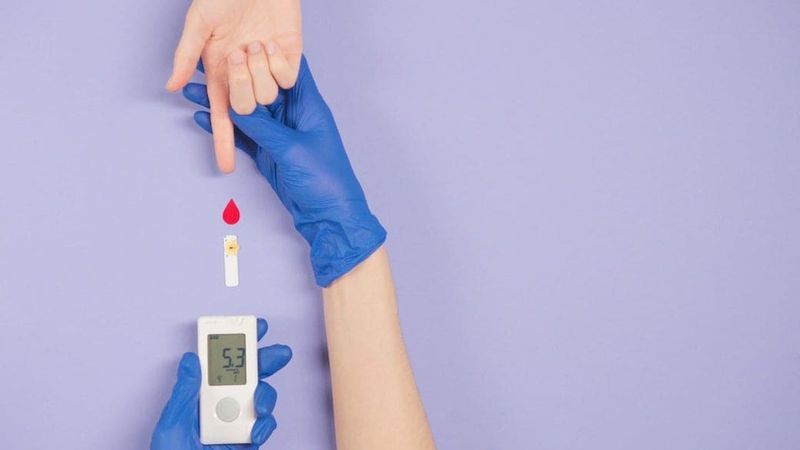

Our Review Process
Our articles undergo extensive medical review by board-certified practitioners to confirm that all factual inferences with respect to medical conditions, symptoms, treatments, and protocols are legitimate, canonical, and adhere to current guidelines and the latest discoveries. Read more.
Our Editorial Team
Shifa Fatima, MSc.
Author
Dr. Apoorva T, MHM.
MEDICAL ADVISOR
What are normal sugar levels?
For an individual living with diabetes, one of the most important things to manage is their blood sugar levels. If you’ve been diagnosed with this condition, you know how daily life can revolve around keeping those numbers in a healthy range. “Blood sugar between 90–110 mg/dL is considered normal”—while understandably simple—doesn't fully reflect the guidelines for people managing diabetes. According to the American Diabetes Association, most nonpregnant adults with diabetes aim for a pre-meal (preprandial) glucose of 80–130 Think how exhausting it must be when every decision—whether planning dinners, picnics, or a movie night—forces the question, “How will this affect my blood sugars?” Those with diabetes face an ongoing, often invisible internal struggle. To learn more about what constitutes healthy blood sugar ranges, see the full article.
Table of Contents
Normal Blood sugar levels
A two-hour blood glucose level of less than 140 mg/dL (7.8 mmol/L) during an oral glucose tolerance test (OGTT) is considered within the normal range. A level of 140 to 199 mg/dL (7.8 – 11.0 mmol/L) indicates prediabetes, while a reading of 200 mg/dL (11.1 mmol/L) or higher after two hours confirms diabetes, according to ADA diagnostic criteria
What is blood glucose?
Blood glucose is the sugar found in your blood. It comes primarily from the food you eat and serves as the main source of energy for your body. Glucose can also be produced by the liver and muscles and stored for later use. The bloodstream carries glucose to all the body’s cells, where it is used for energy.
Over time, if blood glucose levels remain too high, they can lead to serious health problems. Issues can also occur if blood sugar becomes too low or too high even in people without diabetes.
What is the Normal Range of Sugar?
Normal fasting blood sugar levels of 99 mg/dL or less are considered normal. Levels between 100 mg/dL and 125 mg/dL indicate prediabetes, and 126 mg/dL or above on more than one occasion are diagnostic of diabetes (ADA Standards of Care 2023). Essentially, a person with diabetes has to deal with abnormal levels of glucose in their bloodstream. Due to inadequate insulin production or ineffective use of insulin (insulin resistance), there is impaired regulation of glucose, leading to higher blood sugar levels overall. If these high levels persist for a long time, they can lead to serious and sometimes irreversible complications. This is why doctors emphasize regular blood glucose monitoring. Many people with diabetes carry a glucometer to check their levels whenever they experience symptoms of highs or lows.
You might now be wondering what the “normal” range of blood sugar should be. For individuals without diabetes, fasting levels under 99 mg/dL are normal. For people with diabetes, the ADA generally recommends aiming for fasting/pre-meal glucose between 80–130 mg/dL and post-meal glucose below 180 mg/dL for most nonpregnant adults. Keeping glucose in these target ranges helps maintain healthy HbA1c levels over time. A persistently high HbA1c can increase the risk of long-term complications.

What is normal sugar level by age?
Now that you understand how blood sugar works for people without diabetes, it’s helpful to look at how targets are set for those living with diabetes. Knowing the recommended range helps you manage your own levels or support someone diagnosed with diabetes.
Blood glucose targets are not strictly determined by age, but doctors often individualize goals based on several factors. These include overall health, the presence of other conditions, risk of hypoglycemia, and lifestyle. For example, adults may face stress or work-related challenges that affect control, children often have more variability due to activity and growth, and older adults may need slightly relaxed targets due to other medical conditions or risk of low blood sugar. Following is the blood sugar levels chart by age:
Normal Blood Sugar Levels Chart by age for Children (Below 6 Years of Age) & Adolescents (6-12 Years of Age)
For children, blood glucose levels can fluctuate significantly during the day because of varied activities, meals, and growth-related changes. For children under 6 years of age, ADA guidelines recommend aiming for: Fasting/pre-meal: around 100–180 mg/dL and Bedtime/overnight: 110–200 mg/dL. Parents of young children with diabetes often need to be especially vigilant about monitoring, particularly overnight, to prevent low or high blood sugars.
For children between 6 and 12 years old, fluctuations still occur but are often less extreme compared to younger kids. ADA suggests: Fasting/pre-meal: around 90–180 mg/dL and Bedtime/overnight: 100–180 mg/dL. Since children are active and have faster metabolisms, it’s important to teach them (age-appropriately) to monitor their glucose and recognize symptoms of highs and lows.
| Time | Normal blood sugar level | Diabetic blood sugar level* |
|---|---|---|
| Fasting | <100 mg/dL | ≥126 mg/dL (on two occasions) |
| Before meals | <100 mg/dL (same as fasting) | ≥126 mg/dL (diagnostic) |
| After meals (2 hours) | <140 mg/dL (OGTT criteria) | ≥200 mg/dL (diagnostic) |
| Bedtime | Typically <100 mg/dL | Not used for diagnosis |
| Prediabetes | Fasting 100–125 mg/dL | OGTT 140–199 mg/dL |
Normal Blood sugar levels chart by age for Teens (13-19 Years of Age)
Dealing with teenagers can be challenging, and helping them take responsibility for managing diabetes adds another layer. Teens are busy with school, sports, hobbies, and social life, so they need flexible yet safe glucose targets. To maintain good long-term control, it’s important they keep both their daily blood sugars and overall HbA1c within recommended ranges.
| Time | Non-diabetic (diagnostic) | Teen with diabetes (ADA target) |
|---|---|---|
| Fasting | <100 mg/dL | 90–130 mg/dL |
| Before meals | <100 mg/dL (same as fasting) | 90–130 mg/dL |
| After meals (2 hours) | <140 mg/dL | <180 mg/dL |
| Bedtime | Typically <100 mg/dL | 90–150 mg/dL |
Normal Blood Sugar Levels Chart for Adults
Adults are responsible. Most of them are determined to ensure that this condition does not affect their lives with long-term effects. They want to keep their levels in the healthy blood sugar range so they can continue their daily routines as stress-free as possible. Below is the chart of typical blood glucose targets for adults:
| Age | Before Meal | At Bedtime |
|---|---|---|
| Around age 40 | 80 to 130 mg/dL | 100 to 140 mg/dL |
| Around age 50 | 80 to 130 mg/dL | 100 to 140 mg/dL |
| Around age 60 | 80 to 130 mg/dL | 100 to 140 mg/dL |
Normal sugar level by age
- Normal sugar level for male age 40 - In general, before meals, normal sugar level for male should be: From 70 to 130 mg/dL (3.9 to 7.2 mmol/L).
- Normal sugar level at age 40 for female - Female normal sugar level with age of 40 years should be ranging from 70 to 130 mg/dL (3.9 to 7.2 mmol/L) before meal.
- Normal Blood sugar levels chart by age 50 for male - Normal sugar level by age 50 should be 70 to 130 mg/dL (3.9 to 7.2 mmol/L) before meal.
- Normal Blood sugar levels chart by age 50 for female - Normal sugar level by age 50 for female at bedtime should be 100 to 140 mg/dL.
- Normal Blood sugar levels chart by 60 male - Blood sugar levels for male by age 60 at bedtime should be 100 to 140 mg/dL.
- Normal Blood sugar levels chart by 60 female - Normal sugar level by age 60 for female at bedtime should be 100 to 140 mg/dL.
What level of blood sugar is dangerous?
If your blood sugar level rises above 600 mg/dL (33.3 mmol/L), it is considered extremely dangerous and requires immediate medical attention. Such severe hyperglycemia can lead to a life-threatening condition known as hyperosmolar hyperglycemic syndrome (HHS), which can have devastating complications if not treated promptly.
What are Normal Blood Glucose Range in Healthy Individuals?
In healthy individuals or people who are not living with diabetes, the normal blood sugar range is typically around 70–99 mg/dL when fasting. After meals, it is common for blood sugar to rise, but it generally stays within safe limits. To understand this better, here are the usual blood sugar levels at different times of the day:
- Fasting – The normal sugar level before breakfast is usually 70–99 mg/dL.
- Post meals – After eating, blood sugar can temporarily rise, but for most healthy individuals it typically remains below 140 mg/dL about 1–2 hours after a meal. This can vary slightly based on factors like what was eaten, metabolism, and body weight.
- Random – A random blood sugar reading in healthy individuals is generally less than 140 mg/dL.
Why Does Blood Glucose Level Rise in Diabetes?
Blood sugars in diabetes play the most important role in the optimal management of the condition. When these levels fluctuate, a person with diabetes can undergo severe distress and may have to deal with the other complications associated with high or low blood sugars. When a person is newly diagnosed and for the caregivers too, it can be of great help to understand the physiology of the condition and what may cause rises and falls in the daily blood sugars.
A few things that may lead to spikes in blood sugars could be:
- Diet – Any unhealthy diet like too much sugar, high carbs, excessive starch, etc can lead to a rise in blood sugars. Read which sugar free sweeteners are best for a person with diabetes
- Sedentary lifestyle – No or lack of physical activity can cause significant spikes in sugar levels. It would be best to monitor glucose levels with the help of a glucometer as too much exercise can also trigger physical stress leading to spikes.
- Smoking – Nicotine and tobacco consumption in the form of cigarettes can make it difficult for the blood sugars to be in the normal range. People who smoke might also require larger doses of insulin to keep their glucose levels in the normal range.
- Stress – An increase in the stress hormone- cortisol also affects blood sugars. High stress would lead to the production of cortisol which increases the glucose levels in the body and can reduce the efficacy of insulin.
- Sleep issues – Sleep hygiene is important to keep blood sugars on track. A proper sleep cycle plays a vital role in glycemic control. Lack of sleep can also trigger stress and improper regulation of insulin
- Side effects of medication – Some medicines like corticosteroids, diuretics, BP meds, antidepressants, etc can have side effects that warrant blood sugars to spike.
Blood Sugar Levels and Diabetes
Blood glucose level refers to the amount of glucose present in the blood. When we eat, the body breaks down food into glucose, which serves as the primary energy source for the body’s cells. This glucose travels through the bloodstream to reach the cells where it is needed for energy. Diabetes is a condition in which blood glucose levels rise above normal. This occurs either because the body does not produce enough of the hormone insulin or cannot use insulin effectively.
Based on blood sugar levels, diabetes can be classified into different types: prediabetes, type 1 diabetes, type 2 diabetes, and gestational diabetes.
Tests for Type 1 Diabetes, Type 2 Diabetes, and Prediabetes
We all enjoy trying different kinds of food. Food fuels our bodies by providing essential nutrients—macronutrients like carbohydrates, proteins, and fats, and micronutrients like vitamins and minerals. These are all vital for the body to function properly.
When we eat, the body breaks food down into glucose, the main source of energy. This glucose enters the bloodstream and signals the pancreas to release a key hormone called insulin. Insulin helps regulate blood glucose levels. In diabetes, the immune system may damage the insulin-producing cells of the pancreas, or the body may not use insulin effectively. As a result, blood glucose rises. Many people don’t have obvious symptoms, so diabetes often goes undetected until sugar levels are tested. Regular tests are the only reliable way to confirm if someone has diabetes or prediabetes.
There are different types of diabetes like prediabetes, type 1, type 2 or gestational diabetes. The following blood tests are done to find out the type of diabetes in a person :–
A1C Test
This test is also called the Glycated Haemoglobin test. It does not require fasting. It shows the percentage of blood sugar attached to haemoglobin and generally reflects the average glucose level over the past 2 or 3 months. If the level of A1C is 6.5 percent or higher in two separate tests, it means that the person is diabetic. When the level of A1C is between 5.7 and 6.4 percent, it indicates that the person is prediabetic. When the A1C is below 5.7 percent, it is considered normal.
Fasting Blood Sugar Test

In fasting blood sugar test, the blood sample is taken from a person after fasting for 8 hours and the sugar levels are measured. If the sugar level on fasting is 99 mg/dL or less then, it is normal. The normal blood sugar fasting range is from 100 to 125 mg/dL specifies that the person is prediabetic and when the sugar level is higher than 126 mg/dL, this means the person is diabetic.
Glucose tolerance Test

This test is done after an overnight fast. First, a fasting blood sample is taken. Then, you drink a solution containing glucose. Blood sugar levels are checked at set intervals, usually fasting and 2 hours after drinking the solution. If the 2-hour reading is 140 mg/dL or below, it is normal. A 2-hour reading between 140 and 199 mg/dL indicates prediabetes. A 2-hour reading of 200 mg/dL or above on this test suggests diabetes.
Random Blood Sugar test

In this test, blood sugar is measured at any time of the day, regardless of when you last ate. It does not require fasting or a specific schedule. A reading of 200 mg/dL or higher, especially if accompanied by symptoms such as excessive thirst, frequent urination, or fatigue, suggests diabetes and requires prompt medical evaluation.
What Causes High or Low Hemoglobin A1c Levels?
HbA1c is a measure of your long-term sugar levels and how well you can manage them. It gives you an idea of the overall control you have over your blood sugars and whether or not you need to put in more effort to ensure that they are in the optimal range. This is a blood test that needs to be done every 3 months for people with type 1 diabetes and between 3-6 months for T2Ds.
Your Haemoglobin A1c levels can be affected by the following
- Medical conditions like – kidney or liver disease, anemia, etc
- Certain medications like – opioids, HIV medications,
- Blood loss or blood transfusions
- Pregnancy and other hormonal conditions like PCOS
- Diet and lifestyle (as they are related to blood sugar levels)
- Sleep and stress management
- Exercise
A very high HbA1c would mean that the blood sugars are not under control. Identifying the reasons and eliminating them would work best in this case
What is the Normal Sugar Level Before Meal?
Blood sugar level before meal are relatively low. The normal blood sugar level of a normal person after fasting for eight hours or more are usually less than 100 mg/dL. This range can reach up to 140 mg/dL after two hours of having food. If you don’t have diabetes, you can witness your blood sugar levels ranging from 70 mg/dL to 80 mg/dL.
Random Blood Sugar Levels Chart
| Plasma glucose test | Normal | Prediabetes | Diabetes |
|---|---|---|---|
| Random | Typically <11.1 mmol/L <200 mg/dL | N/A | ≥11.1 mmol/L or ≥200 mg/dL (with symptoms) |
| Fasting | <5.6 mmol/L (<100 mg/dL) | 5.6–6.9 mmol/L (100–125 mg/dL) | ≥7.0 mmol/L (≥126 mg/dL) |
| 2-hour post-prandial | <7.8 mmol/L (<140 mg/dL) | 7.8–11.0 mmol/L (140–199 mg/dL) | ≥11.1 mmol/L (≥200 mg/dL) |
Anytime during the day, random blood sugar (RBS) tests can be performed, regardless of when you last ate. This test helps detect abnormal glucose levels and can also be used to monitor treatment progress. A reading of 200 mg/dL (11.1 mmol/L) or higher, along with symptoms of high blood sugar, indicates diabetes.
An RBS test’s main goal is to measure random blood sugar levels and aid in timely diagnosis and treatment. If someone has any of the following symptoms, a random blood sugar test is advised:
- Blurry vision
- Unexplained weight loss
- Dry mouth or excessive thirst
- Slow-healing wounds
- Frequent urination
What are low sugar level symptoms?
One of the most dangerous things a person with diabetes could experience is low blood sugar. Recognizing the symptoms before it becomes fatal would be super important. Some of the low sugar level symptoms are mentioned below:
- Dizziness
- Blurred vision
- Shaking/trembling of hands and feet
- Palpitations and difficulty breathing
- Tingling lips
- Confusion, etc
If this happens, immediately check the sugar levels and take a tablet of glucose – 15 grams of glucose. Know about Indian breakfast for diabetes .
What are high sugar level symptoms?
Hyperglycemia may not be immediately fatal but can cause a condition called diabetic ketoacidosis (DKA) which can lead to a diabetic coma. Other chronic conditions like heart, liver, or kidney diseases are also common. Some of the symptoms of high sugar level are mentioned below.
Some high blood sugar symptoms in adults are:
- Fatigue and tiredness
- Headaches
- Anxiety
- Extreme thirst and hunger
- Frequent urination
- Parched throat
In case the levels are more than 250/300 mg/dL, take an immediate correction dose to bring the blood sugar range to normal.
When things go awry
When we consume food, the pancreas starts working and releases enzymes and hormones. The enzymes help in breaking down the food and hormones help the body handle the inflow of glucose. One of the crucial hormones among these is insulin which is responsible to regulate the blood glucose levels in the body. This is the normal process the body does each time we intake food.
However, things go wrong when the pancreas does not make enough insulin needed by the body or stops making insulin completely. In that case, the sugar levels in the blood shoot up. This happens in the case of type 1 diabetes. In type 2 diabetes, the pancreas does make enough insulin but the cells fail to use them properly and so the glucose levels rise high. This is known as insulin resistance and the manifestation of type 2 diabetes.
Honestly, high glucose levels can seriously make you feel bad. Feeling thirsty, frequent urge to use the washroom, weight loss and fatigue are the symptoms of high blood glucose which is also called hyperglycemia. If this is not treated well, it may lead to serious issues such as Diabetic Ketoacidosis (DKA). Persistent blood glucose levels can land you into other complications which include heart, eye and kidney disease and also nerve damage.
When to see a Doctor
Knowing when to see your endocrinologist is important in the life of any person with diabetes and even their caretakers. Learn all about the blood sugar levels and their normal ranges to be able to understand what to look out for. In case of frequent lows, unmanageable highs, traces of ketones in the urine, continuous blurred vision, etc. visit your doctor. Ideally, you should be visiting them every 3 months after your HbA1c test.
Treatment of Diabetes
Once the type of diabetes is confirmed, a person can proceed further with the treatment of diabetes accordingly. Regular blood sugar monitoring is essential to keep a tab on sugar levels. Apart from that taking insulin or oral medications are a part of the treatment process. However, to manage blood glucose levels effectively, it is essential to eat a healthy diet, stay at a healthy weight and stay active by involving in regular physical activities.
Embracing an active lifestyle is the first step and a very crucial one for managing diabetes. Maintaining a healthy weight by including a healthy diet and good exercise plan needs to be a vital part of their lives.
Healthy eating
There is no particular diet for diabetes, however, people with diabetes need to focus on a healthy diet. Foods rich in nutrition and fibre and which are low in fats and calories such as fruits, vegetables, whole grains and lean proteins should be a part of the diet. Also, eliminate foods with saturated fats, sweets and refined carbohydrates.
One of the important aspects that one must figure out is what and how much to eat. This could be a challenge but it is always advisable to reach out to a registered dietician who can help and create a meal plan for you considering your food preferences, lifestyle and health goals.
Physical activity
Physical activities are a must and best for all groups of people for a healthy and active lifestyle, especially for people with diabetes. Physical activities like aerobics and exercise can reduce sugar levels by moving the sugar into the cells where it is used for energy. Physical activity also increases insulin sensitivity in the body. It is best to pick up the activities that you enjoy like walking, swimming, cycling etc.
At least 30 minutes of daily physical activity is a must and avoid sitting in one place for a long time.
Prevent Diabetes
Diabetes can be prevented if taken care of at the early stages. When various tests are done to find out the blood sugar levels and if the results show positive for prediabetes, then it is good to get into the lifestyle program which will help in reversing diabetes without getting into any medications. A person with prediabetic is at a greater risk of developing type 2 diabetes but by taking part in the program, one can reduce the risk of getting diabetes by almost 60 percent.
Remedies For Low Sugar Levels
Low sugar levels in the body can have fatal effects. A person is asked to take extra care and caution to make sure that their sugar levels do not drop to an extent where most organs, including the heart, are deprived of the required glucose to function. Recognizing low sugars and identifying patterns, if any, would help significantly in preventing them. If you are dealing with hypoglycemia, here is what you can do to treat it
- Identify the signs and symptoms of lows. It may be different for different people and it may also not be consistent throughout each low that you are dealing with. The most common symptoms would be – dizziness, inability to see well, headache, hunger, shaking hands and legs, sweating, etc.
- Check your blood sugars to know how much sugar you would have to consume. It would be best to check the levels before you eat anything sweet just to be sure.
- 15 grams of sugar needs to enter your body. You can do this in the form of 3-4 glucose tablets, one tube of glucose gel, some hard candy, fruit juice, 1 tablespoon of honey, etc.
- Check your sugar levels 15 minutes after eating. In case they are still below 70mg/dL, eat another 15 grams of sugar and monitor them after 15 minutes
- If your sugars are too low that you pass out, keep people around you posted about what to do in this scenario. You will need a glucagon injection because you will not be able to swallow liquids in an unconscious state.
- The best remedy for hypoglycemia would be prevention
Remedies For High Sugar Level
- If your sugar levels are high, you will need to administer a correction dose. This means taking an injection or a dose of insulin that will bring the levels down. Notice signs of hyperglycemia and before administering insulin, always check your sugar levels. Sometimes, the signs of hypo and hyperglycemia can feel the same.
- Keep track of your blood sugars to identify patterns in spikes. You can do this with a glucometer or with a CGM device.
- Check for ketones in the body using a urine strip if the sugars are constantly and persistently above 250mg/dL
- Make use of technology like the insulin pump as it may help to provide continuous and timely doses of insulin. Pairing your pump with the CGM device can act as a pseudo-pancreas as the advanced technology will do all the work automatically.
- Drink a lot of water and go for a small brisk walk/exercise to lower your sugar levels. Exercise should only be done if your body is not too fatigued after the spike.
- Monitor your levels again before you consume food to know how much insulin you may have to take.
Bottomline
Maintaining normal diabetes level less than 140 mg/dL in the body becomes the first and most important task of any person with diabetes. Since frequent highs and lows in the blood sugars can lead to several complications and issues, recognizing the signs and ensuring that you are able to catch them early on and deal with them fast enough. For different age groups, the levels of high, normal, and low might differ. Ensure to be aware of all the aspects depending on the age of diagnosis of the person with diabetes. Also, understand when you would have to visit your doctor – usually, this would be the case in case there are frequent and uncontrolled sugar levels. Take care of your diabetes, in the best possible way.
FAQs
what is the normal blood sugar level?
The normal sugar level in human body is less than 140 mg/dL (7.8 mmol/L). A blood sugar range or diabetes range of more than 200 mg/dL (11.1 mmol/L) indicates that you have diabetes, and a sugar level between 140 and 199 mg/dL (7.8 mmol/L and 11.0 mmol/L) suggests you have prediabetes.
What is a high random glucose level?
Often the diabetes sugar levels are set and the concept of normal is defined. Random glucose means the reading on the blood glucose monitor at any non-specific point in the day. Any reading above the level of 200 mg/dL (11.1 mmol/L) is considered high and may indicate diabetes. While people may have varied definitions of what they call ‘high,’ this threshold is the clinically recognized limit. Readings between 150–180 mg/dL can be elevated but usually do not require an immediate correction dose. Another important factor to consider is why the random glucose is high. In case of ongoing stress, recent consumption of something sweet, improper injection of insulin, etc., it is important to identify the cause and take appropriate action.
What is the maximum limit of random blood sugar?
Your sugar levels can go very high. However, the normal range for a random reading in a healthy individual would be below 140 mg/dL. At times, after a heavy or carb-filled lunch, the random sugars might be slightly higher. Most often, this normal range is maintained by people who stick to a routine of regular diet and physical exercise. However, excessive consumption of sugary foods, higher body fat, or other factors might cause sugar levels to rise dramatically, even up to 600–700 mg/dL. This level of hyperglycemia can have serious and potentially life-threatening consequences.
How do you control random blood sugar?
It is highly important to keep your sugar level normal. The dedication and hard work required to do so would be highly beneficial in the short and long term too. Ensuring that you are taking the right steps to keep these levels in check can be done in the following ways:
- Eating healthily and on time
- Taking the required dose for the number of carbs you are consuming
- Planning and managing sick days well.
- Exercising regularly to ensure proper metabolic health.
- Not forgetting the doses of insulin.
Is Blood Sugar of 135 High Before Eating?
The recommended sugar level in blood after fasting should be around 70 mg/dL to 130 mg/dL. But if your blood glucose levels are more than 130 mg/dL, even without having food for the past 8 hours or more, you may have fasting hyperglycemia. It is a very common diabetes complication.
What is the normal range of blood sugar in India?
Normal sugar level in adults (glucose) below 140 mg/dL after meals or at random is considered normal among most Indian adults. If this range hovers from 140 mg/dL to 199 mg/dL, it indicates the person has prediabetes. But if the sugar levels exceed the 200 mg/dL mark, it points toward diabetes. For fasting blood sugar, the normal range is lower, between 70–99 mg/dL.
What is a Rather Good Blood Sugar Level in the Morning?
If you’re planning to take your blood sugar readings in the morning before breakfast, it should be around 70 mg/dL to 100 mg/dL. This range is considered normal and is often reported by non-diabetic people. But if you take the glucose reading after breakfast, the readings can spike. Even in the morning, the normal diabetes value should not exceed 140 mg/dL. If it does, talk to your doctor.
Is 135 Blood Sugar Level High in the Morning?
Blood sugar levels exceeding 126 mg/dL in the morning indicate hyperglycemia. If you take the blood sugar reading on an empty stomach in the morning, and it still shows you glucose levels exceeding the 126 mg/dL mark, it highlights hyperglycemia. You should report it to your doctor and start timely treatment.
What is the Best Time to Ideally Check Your Blood Sugar Level?
If you’re taking multiple injections a day, you may be recommended to check blood sugar readings before meals and even at bedtime. But if you’re in the category of intermediate to long-acting insulin, you may be asked to check it before breakfast and bedtime. If you’re too concerned regarding your blood sugar levels, get yourself a constant glucose monitor device for real-time glucose updates.
What is the Normal Sugar Level After Meal?
Normal blood sugar levels 2 hours after eating can be less than 140 mg/dL in non-diabetic individuals, and for people with diabetes, it can go up to 180 mg/dL. Three hours after eating, levels generally return close to fasting values, around 70–130 mg/dL. If your 2-hour post-meal sugar falls in the range of 140–199 mg/dL, it indicates prediabetes, and any reading 200 mg/dL or above points toward diabetes. If your readings exceed these limits, you should report them to a doctor.
What is the Normal Sugar Level for Non-diabetics?
Anyone who hasn’t been diagnosed with diabetes should have a blood sugar level of less than 100 mg/dL after approximately eight hours of fasting. This level can touch the 140 mg/dL mark after two hours of having a meal. Normal range of sugar levels are generally in the range of 70 mg/dL to 110 mg/dL for non-diabetics.
What Blood Sugar Should You Go to The Hospital For?
Blood sugar too high or too low can make you land in a hospital. If you have blood sugar levels less than 70 mg/dL, you may approach a doctor for hypoglycemia. You may also have to visit a doctor or hospital if your blood sugar levels exceed the 300 mg/dL mark. Both are terrible positions to be in.
Is 200 Blood Sugar Normal After Eating?
Irrespective of what you had for your meal, a blood sugar level of 200 mg/dL or more highlights diabetes. Since the body takes time to process the food you had, you should always take your readings of your normal blood sugar level after meal (2 hours). It will give you a relatively accurate reading of your blood glucose levels.
How Soon After Waking Up Should You Test My Blood Sugar?
Since people can now check their blood sugar levels at home, doctors generally recommend fasting blood sugar test almost immediately after waking up. An empty stomach is generally the best time to test blood sugar in the morning. You should get the reading done when you haven’t had breakfast or any morning drink.
What is the Ideal Blood Sugar (Glucose) for a 5-Year-Old Child?
The normal range of blood sugar level for a five-year child should be around 80 mg/dL to 180 mg/dL. The normal range limit will keep narrowing as the child grows older. If you think your little one is at risk of developing diabetes, you should take regular readings and report any high levels to a doctor for immediate action.
What is the Normal Blood Sugar Levels Chart by Age 60?
There are no blood sugar levels that are considered safe for different age groups. It is the same for those who do not have diabetes at any age.
What is the sugar level after lunch?
The sugar levels after 2 hours of meal can be Less than 180 mg/dL.
Till when does a patient need to be given glucose
The patient should be given a glucose drip until his or her normal blood glucose level is restored, the patient is able to move normally, and he or she is encouraged to eat foods that provide instant energy. Even after receiving intravenous glucose, glucose levels may fall if a proper diet is not followed.
What are the normal blood sugar levels for adults?
The range of normal blood sugar levels for adults should always be less than 140 mg/dL.
What is the normal fasting blood glucose level?
Normal fasting blood glucose levels are predicted to be between 70 mg/dL (3.9 mmol/L) and 100 mg/dL (5.6 mmol/L), or between these ranges. Changes in lifestyle and monitoring of glycemia are advised when fasting blood glucose levels are between 100 and 125 mg/dL (5.6 to 6.9 mmol/L).
What is normal range of sugar?
Sugar normal range after 8 hours of fasting, for a healthy adult (male or female) should be between 70 and 100 mg/dL.
What is the sugar level chart according to age?
| S. No. | Age | mg/dL |
|---|---|---|
| 1 | 0–5 years | 100–180 |
| 2 | 6–9 years | 80–140 |
| 3 | 10 years and over | 70–110 |
References
- https://diabetesjournals.org/care/article/45/Supplement_1/S83/138927/6-Glycemic-Targets-Standards-of-Medical-Care-in
- https://diabetesjournals.org/care/article/46/Supplement_1/S97/148053/6-Glycemic-Targets-Standards-of-Care-in-Diabetes
- https://diabetes.org/living-with-diabetes/treatment-care/checking-your-blood-sugar
- https://www.webmd.com/diabetes/normal-blood-sugar-levels-chart-adults
Disclaimer
This website's content is provided only for educational reasons and is not meant to be a replacement for professional medical advice. Due to individual differences, the reader should contact their physician to decide whether the material is applicable to their case.








